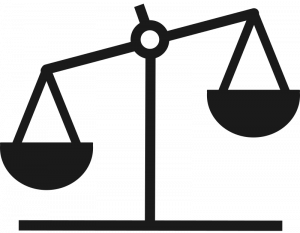The grey area within publishing practices
The world of publishing has seen an increasing number of publishers that exist somewhere in between the world of reputable publishing and ‘unethical’ publishing.
Problems have occurred with the emergence of ‘gold’ open access publishing, which usually involves paying a fee to publish with the journal or where publishers may be engaged in producing legitimate journals, but their impact may be be limited because they don not have the reach or visibility of mainstream or well known publishers.
The table below highlights some of the elements (for example content, editorial processes, publication fees, indexing and citation impact) to consider when selecting a publication source.
| Reputable publishing practice | Signs of potential problems | |
|---|---|---|
| Content | Publishes quality research that you would read and use. | The journal promises to publish all content. |
| Organisational affiliation | You can identify and contact any affiliated organisation. | There is no clear organisational affiliation. |
| Editorial processes | Has clear editorial policies and peer review processes. | The editorial process is unclear. |
| Peer Review | Is listed in the Ulrichs directory as a peer reviewed journal. | Does not undertake a peer review process. |
| Publication fees | Has clear information about publication fees. | Publication fees are undisclosed or difficult to find. |
| Editorial board | The names and affiliations of editorial boards are clearly visible. | It is unclear who is on the editorial board. The same editors are on numerous journals. |
| Indexing | Is indexed in standard databases in the subject field. | Not indexed in the standard databases. |
| Citation impact | Mention of citation impact factor comes from standard sources such as JCR, Scimago or Scopus Sources. | It makes unverified claims regarding citation impact. The sources are not the standard ones. |
Also watch out for journals which:
- has a name that is similar to other established journals or academic institutions
- publish articles on subjects not normally associated with the discipline
-
sends unsolicited emails which contain errors, are extremely complimentary or the journal is not in the researcher’s discipline
 Activity
Activity
Use the series of statements provided in this checklist to assess a selected journal as a possible option for submitting an article to for consideration for publication.
Each statement should not be taken in isolation as sufficient to condemn or exonerate a journal as most journals will not meet all criteria, and some predatory journals will meet some criteria. A combination of factors should be taken under consideration to assess the journal’s suitability.
Additional resources to check
- Predatory publishers criticised for ‘unethical, unprincipled’ tactics
Podcast by the ABC’s Background Briefing. - Vanity publishers
Article and Podcast by the ABC’s Background Briefing. - Discontinued sources list
From the Scopus databases – see download link at the bottom of the page. These sources are mainly discontinued because of issues related to either publication practice or low metrics ratings.

